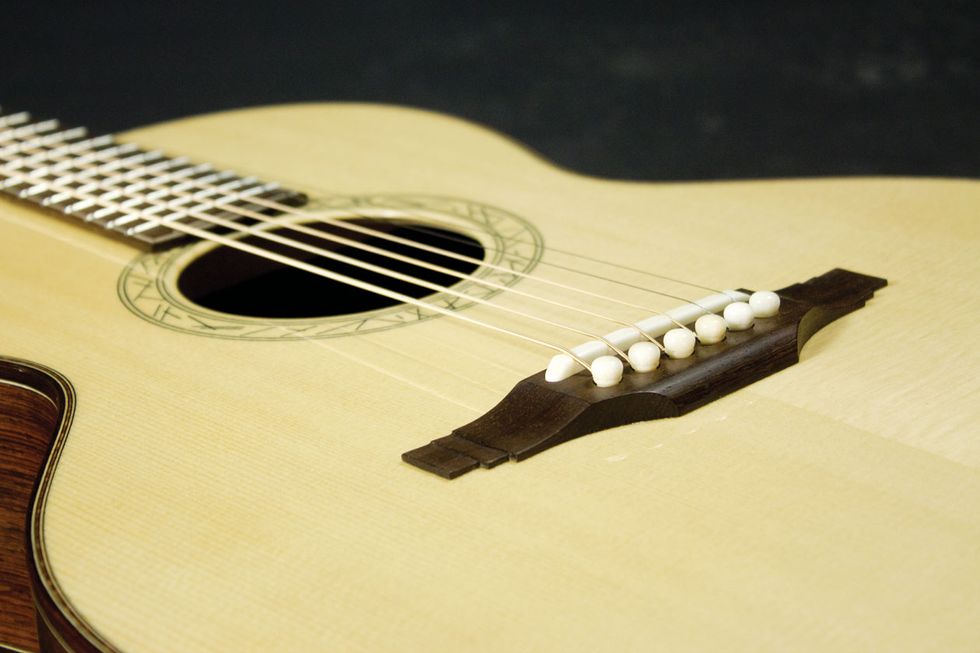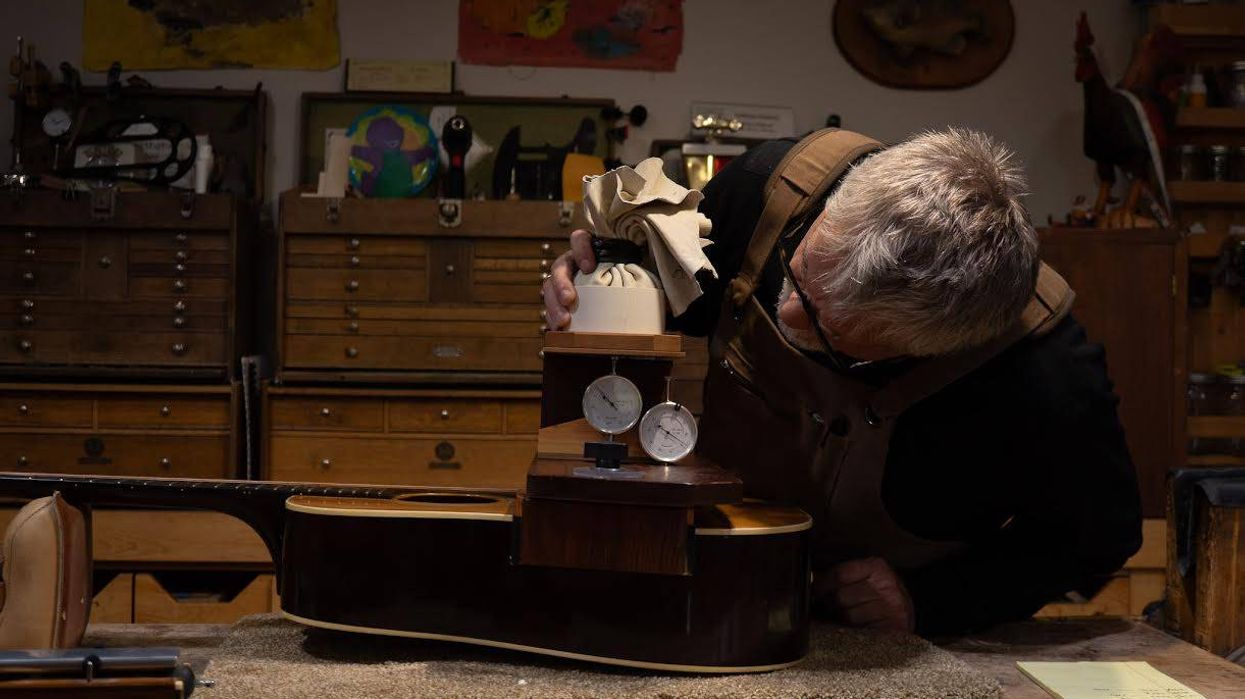Once any musical instrument is produced, it then has what I call a “sonic footprint,” which is the sum of every component that makes up that particular musical instrument. All of these parts working together is what’s called a “coupled system,” and this is what produces the sound of a guitar. If these parts are altered in any way, it has the potential to change that sound.
When performing any repair, or even general maintenance, you have to be very careful about the decisions you make. Not only could they profoundly change the sound, they could have an impact on the response and even the longevity of your instrument. The importance of a good working relationship with your technician can’t be overstated. Between the two of you, smart decisions can be made that will better ensure a lifetime of enjoyment.
At the very least, unnecessary repairs or alterations can dampen the sound of a guitar. At their worst, they can significantly reduce an instrument’s lifespan. Acoustic guitars are already fragile instruments to begin with, susceptible to humidity changes and wear from general use. As a repair technician, I’ve witnessed seemingly endless bad repairs over my lifetime that have done irreversible damage. The trick is to know where to draw the line.
When a customer comes into my shop and is concerned about his/her instrument, I generally ask the “big four” questions: How does it play, how does it sound, how is the intonation, and is it stable? If the answer to all these questions is “good” or “yes,” then the guitar generally has no problems. It’s when people try to fix problems that aren’t there that can cause irreversible damage. So, again, where do you draw the line with when or when not to perform repairs to your acoustic instrument?
For example, let’s take the bridge area of a flattop steel-string guitar. One commonly suggested repair is shaving the bridge, which is an alteration that has been around for years. There are indeed times when shaving the bridge is warranted, but then again, a neck reset is often what’s really needed. If the neck can be reset, you never shave the bridge. It’s bandaging the symptoms rather than addressing the true issue. Additionally, removing mass from the bridge will lighten the bridge, and that will absolutely change the sound and response of a guitar. All that said, if it’s an inexpensive instrument where the neck angle is next to impossible to change, yes, shaving the bridge may very well be the ticket to getting a few more miles out of your guitar.
Another sensitive component of this coupled system is the bridge plate. Again, I have seen way too many attempts to flatten the top by removing the original bridge plate and replacing it with a larger version. At the core of this misguided alteration is the inability of the technician to recognize what the load of the top is and what it’s supposed to look like. Generally, the customer and the technician see an arch behind the bridge (what we call the “load of the top”), and misread it as the top failing. There is, however, a load behind the bridge on all acoustic flattop steel-string guitars. The real question to ask is if it’s excessive, failing, or stable.
The bridge plate (Photo 1) and bridge represent a fragile coupled system that has a big impact on your guitar’s sound, so if they don’t truly need to be altered, don’t.
The best-sounding acoustic guitars have what many might consider to be a heavy load behind the bridge, but most commonly, that’s just what it needs to be to sound as good as it does. If your technician replaces the bridge plate to flatten this load, it always dampens the sound of the instrument, and typically does nothing to lengthen the life of the instrument. If the repair is unavoidable, removing a bridge plate is a job that should only be performed by a skilled luthier. I’ve seen the results of someone getting in over his or her head too many times unfortunately.
These are just two of the most common repairs performed on acoustic instruments. And both need to be thought out carefully before moving forward. Remember: The bridge and bridge plate make up a fragile coupled system to begin with, and they live right at the edge. The trick is to keep them performing there for as long as possible. If everything is balanced correctly between the bridge, top, braces, and bridge plate, it’s magic. If one of these components is altered, however, it will likely affect the instrument’s tone and response.
So, where do you draw the line? Again, I recommend you start by asking yourself the aforementioned four important questions. If the answers are all positive, then you probably don’t have a problem. And at that point, I will generally inform my customers that we should just keep an eye on it and see where it goes.
Until then, just relax and play your guitar.




















